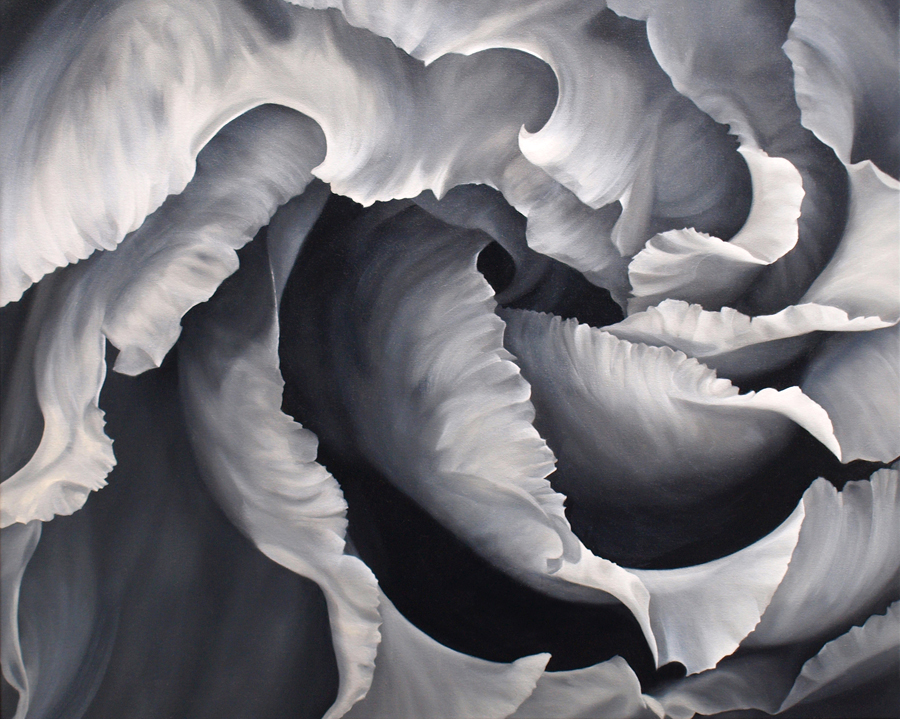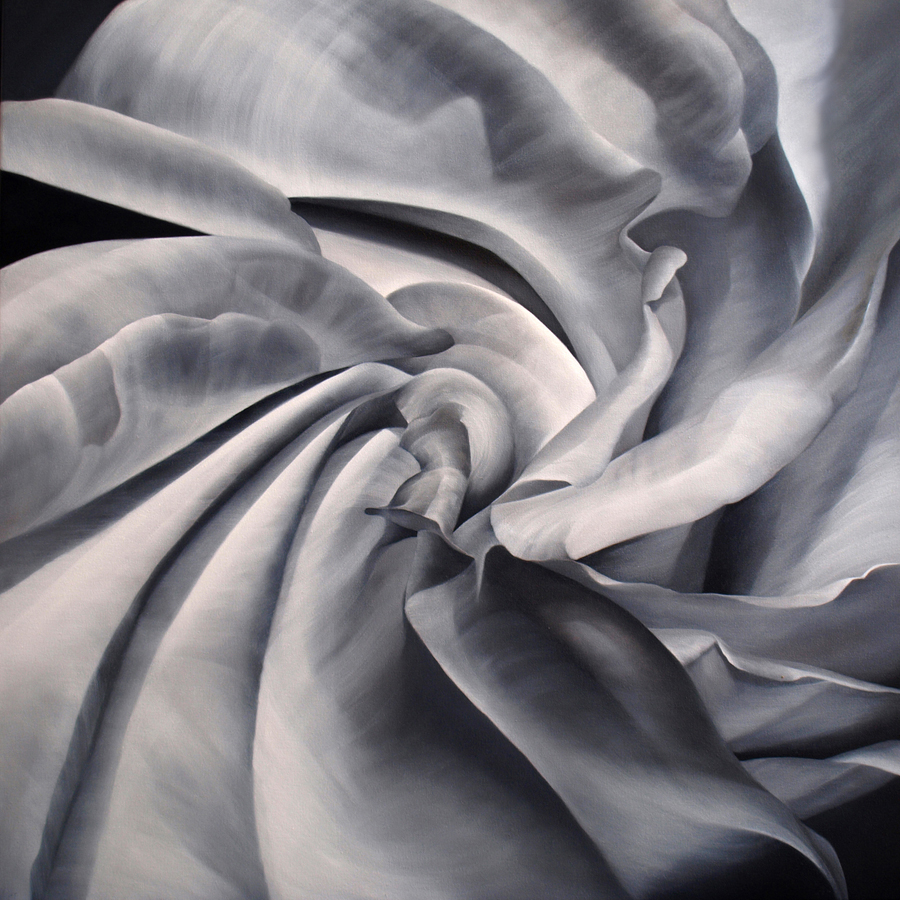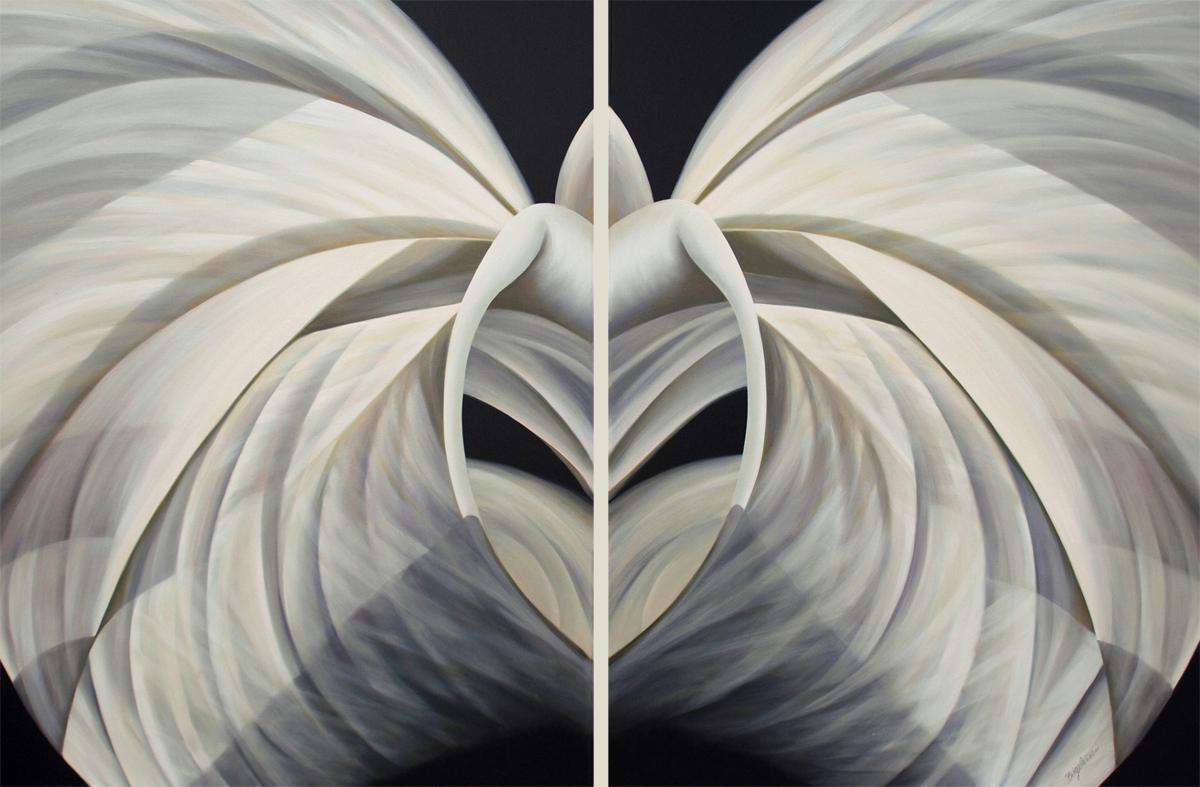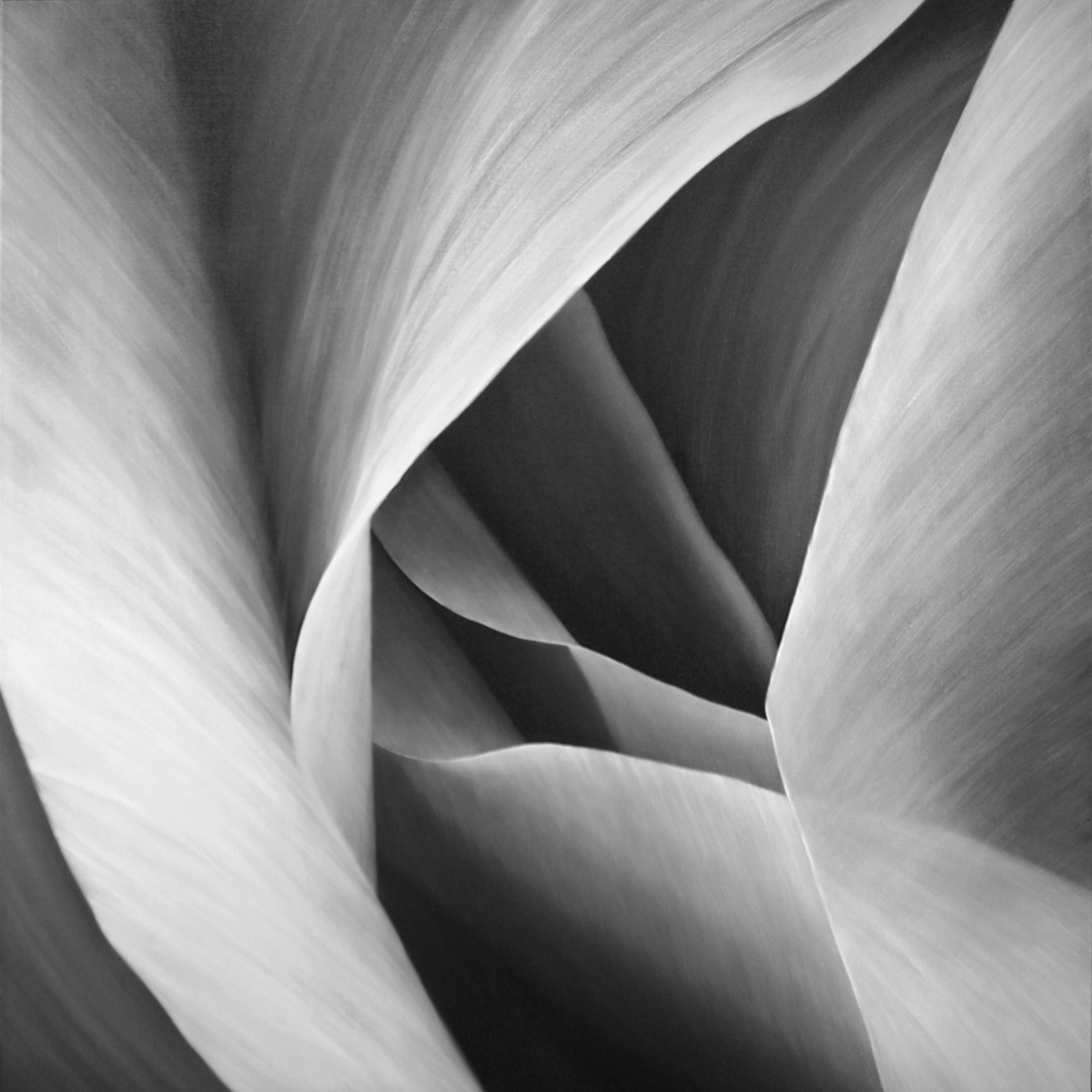FRACTALS
As an artist who has always used natural forms as my subject and began my career by painting Rembrandt-like portraits of white roses, my interest in Chaos Theory and fascination with one of its components – fractals – led to a permanent transformation of my artistic vision. To echo William Blake, I see the world in a grain of sand, and heaven in a wild flower, hold infinity in the palm of my hand, and eternity in an hour. My subject is no longer simply a flower. By stripping away the mask of the exterior form and magnifying the image beyond what is recognizable to the naked eye I have discovered an inexhaustible richness of the internal structure. I have gained a deeper insight into the universal properties of all natural phenomena because, at this depth, I have uncovered dynamical systems whose patterns repeat in other phenomena. This is where my work takes the literal definition of a fractal – the self-similarity of an object of nature that is repeated thousands of times at different magnifications (picture a head of broccoli) – and broadens the scope beyond a single object. It is not my objective to convey every orifice and streak of my subject’s anatomy, but rather to capture my subject’s character and essence with the ultimate objective to celebrate the nature of life.
Tipping Point (above) reveals, through the exploration into the depths of a lisianthus flower, the defining moment in a series of events at which time momentous and irreversible reactions occur. At its core the chaotic patterns taking place during the unfolding, or the decay, of the petals repeat in the dynamical systems of waves, clouds, and coral reefs to name just a few, and where we know there is no predictable outcome to the future of the system. This painting, when rotated in all four orientations may visually suggest different systems, but with each rotation the system has the same properties – which adhere to the principles of the “Mandelbrot Set” as illustrated by [Benoît] Mandelbrot to support his findings.
Vortex (above) puts its fingerprint on the universe; it’s a vision to infinity as seen through the magnification and unfolding of the petals of a rose. This rose ‘by any other name’ is no longer a rose; it is a non-linear dynamical system that repeats through countless natural phenomena including shells, hurricanes, tornadoes, and even galaxies. And as with Tipping Point there is no predictable outcome the future of the system.
– – –
Magnifying my subject even further to the pure abstraction of the form, my work [ the Untitled series] assumes an entirely new choreography, energy, and spirit having been totally freed from the constraints inherent in creating any depiction of representational work though the forms may suggest a natural likeness, reflective of their supple, sensuous and underlying erotic origins. My canvases now explode with a new life-force as I focus on the movement and distribution of space across the surface, while continuing to use color and contrast to draw the viewer in and often back them out.
The inspiration for Untitled No. 26 (above) came from the dying petals of a golden trumpet lily which have a unique asymmetrical way of curling as they decay. It was from the death of one object of nature that gave birth to a new vision and a new energy in my work just as the death of a caterpillar gives life to a butterfly. In Chaos Theory the symbol of a butterfly represents the phenomenon known as “the butterfly effect” – where small differences in initial conditions yield widely diverging outcomes. It was intentional that as a diptych Untitled No. 26 resembles a butterfly; however this was not in my vision when I conceptualized working with these specific forms. Its genesis evolved from duplicating the images and reorganizing them in multiple orientations then subsequently putting them together. It was this serendipitous break-through, my personal “butterfly effect,” that further drives my interest in fractals and challenges my creativity and my vision.
Untitled No. 30 (above) is also an outcome of this break-through. After magnifying this lisianthus to just a fragment of its form, then bi-furcating the image and reorganizing the units in multiple orientations, the result is a dynamical system where each diptych assumes its own powerful properties.
Although Untitled No.29 (above) is a single unit the outcome is similar to the other discoveries. The inner core of this rose, magnified beyond recognition, reveals another dynamical system that when rotated in multiple directions each orientation not only assumes a unique attraction but also takes on its own life-force. This image also adheres to the principles of the “Mandelbrot Set.”
– – –
Echoing the personal philosophy of Rembrandt who “loved what he painted and only painted what he loved,” I continue to be captivated by natural forms. My inspiration is without boundaries. A portrait painter has a duty to reveal the character of his subject – his mood, inner drama, and mystery – not merely copy a likeness. I apply that same philosophy to my painting practice. Working exclusively with oils and with mediums at different viscosities for glazing, I apply upwards of twenty translucent layers over an under-painting to sculpt the forms and to capture the depth of my subject’s anatomy. As in a Rembrandt painting, there is strong contrast and great depth in my work while the surface is smooth; the focus is on the content: the organization of the space, the fluidity of the brushwork, and the subtle tonal transitions.
Since color has a significant impact on one’s perception, I use a carefully controlled palette forcing the brain to draw upon previous experiences or points of reference when viewing art, thus each viewer has an individual response to a painting. It is not necessary for the viewer have any knowledge of fractals to make a connection to the work. My goal is to initiate a dialogue from both the artistic and scientific points of view; and ultimately to captivate the viewer, and to engage them to question their own bond between human activity and the patterns and cycles of nature.



![UNTITLED NO. 30, 25 x 72 inches [ horizontal orientation]](https://www.scq.ubc.ca/wp-content/uploads/2014/03/UNTITLED-NO.-30-25-x-72-inches-horizontal-orientation.jpg)
![UNTITLED NO. 30, diptych, 36 x 50 inches [vertical orientation]](https://www.scq.ubc.ca/wp-content/uploads/2014/03/UNTITLED-NO.-30-diptych-36-x-50-inches-vertical-orientation.jpg)
